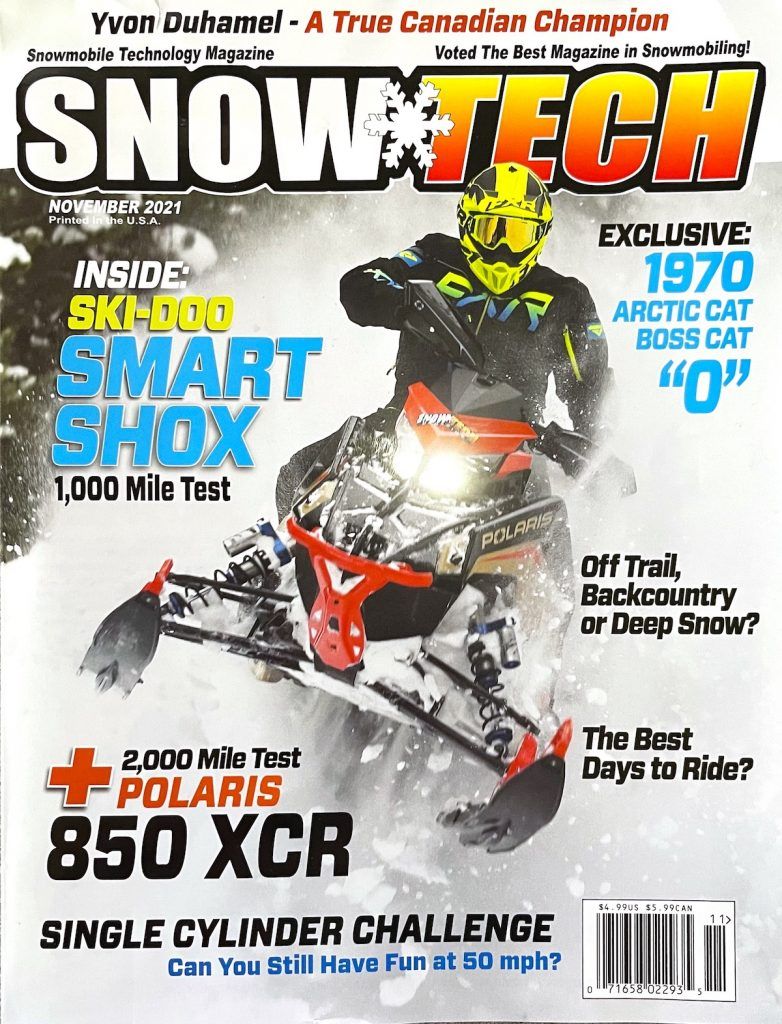I recently received my November 2021 issue of Snow Tech magazine and found this story of the very first Boss Cat interesting. Thought I’d share it with you. If you don’t already, subscribe to Snow Tech, Kevin Beilke has some great reads – KALE
Photos from the Jim Beilke Photo Archive at Race & Rally/Snow Tech Magazine
This is the very first Boss Cat speed run sled built by Arctic Cat, or Arctic Enterprises, as it was called at the time. Strangely, it is not known as “Boss Cat I”, rather, since it was built before the “Official” Boss Cat I (larger rocket-powered dragster) this sled is instead referred to as the “Original” Boss Cat.
This six-cylinder beast was built as a speed run sled by Arctic Enterprises for the 1969-70 winter season and was raced by both Marvin Ode and Roger Janssen.
Marv Ode ran the machine at West Yellowstone in 1970. The six-cylinder dual-bank engine was built by Dick Schellbach, who built many custom mod engines for Arctic Cat’s speed sleds based on JLO engines in the late 60s and early 70s. This one was made from the components of six different 372 JLO singles and three 744 JLO Mod twins with custom-made crankcases and crankshafts.
The motors were tied together with a chain then onto the track with a chain for a direct drive system – when the motor turned over, so did the track.
There were two big Hirth rewinds, one on each side. It took five or six guys to start it. Two would lift the rear end up, and two would pull the twin recoils trying to start the motors at the same time while one or two more would work the two throttles – one on each side of the bars.
It usually took six to ten tries to get it going. They would let it warm up then drop the rear end and the sled would slowly gain speed. In some of the photos we see a push sled used to get the sled up to speed so it wouldn’t stall.
The very first Boss Cat was only used for five or six speed runs. One time a burned out switch and a lot of smoking wire cut the run far short of the timer. The sled had a best run of 102.5mph.
Last we heard, the current owner has it in un-restored condition but plans to restore it. The missing part of the sled had been the one-of-a-kind seat built specifically for this machine. It turned up a few years ago and now has made its way back to the current owner.
